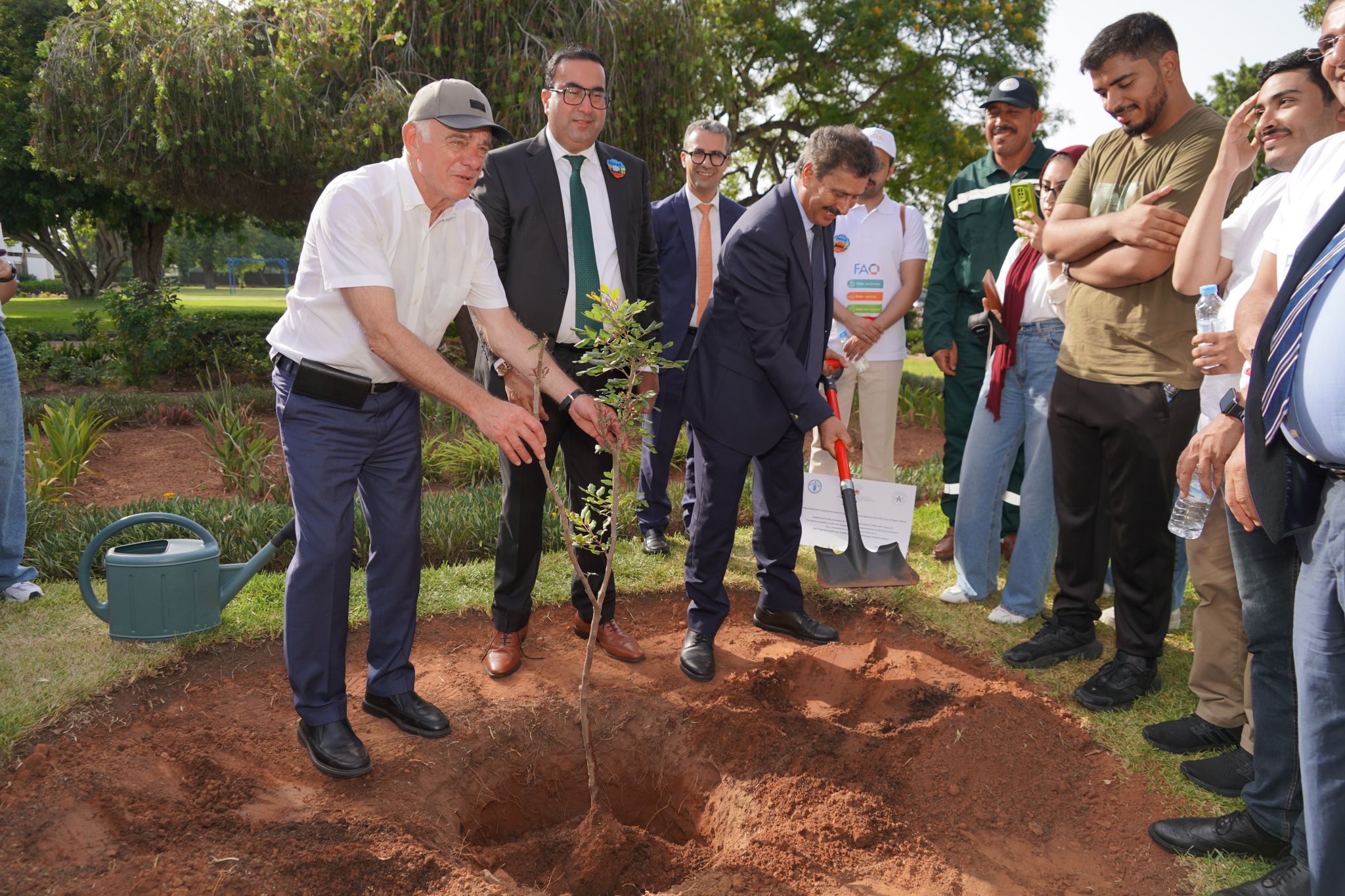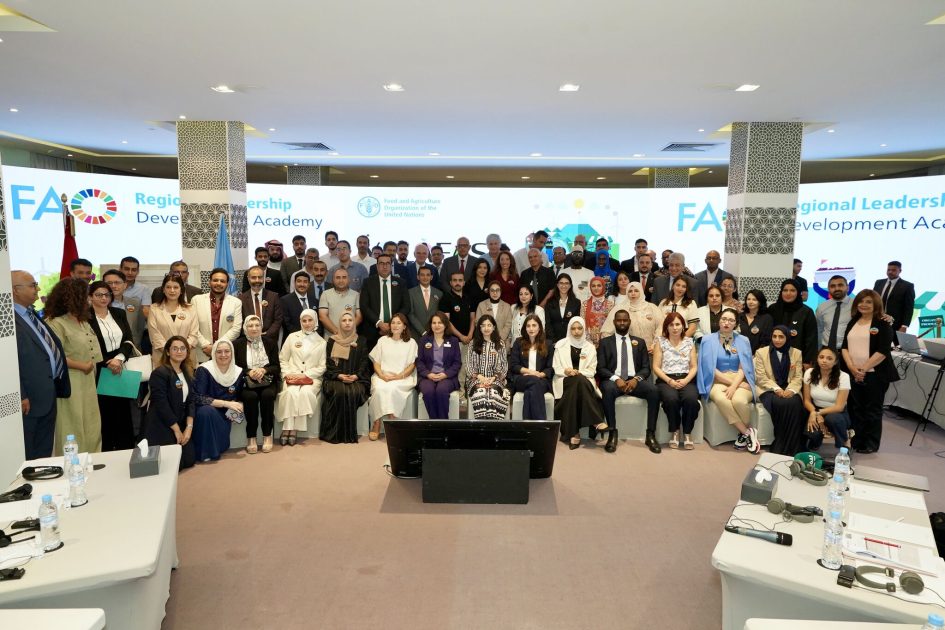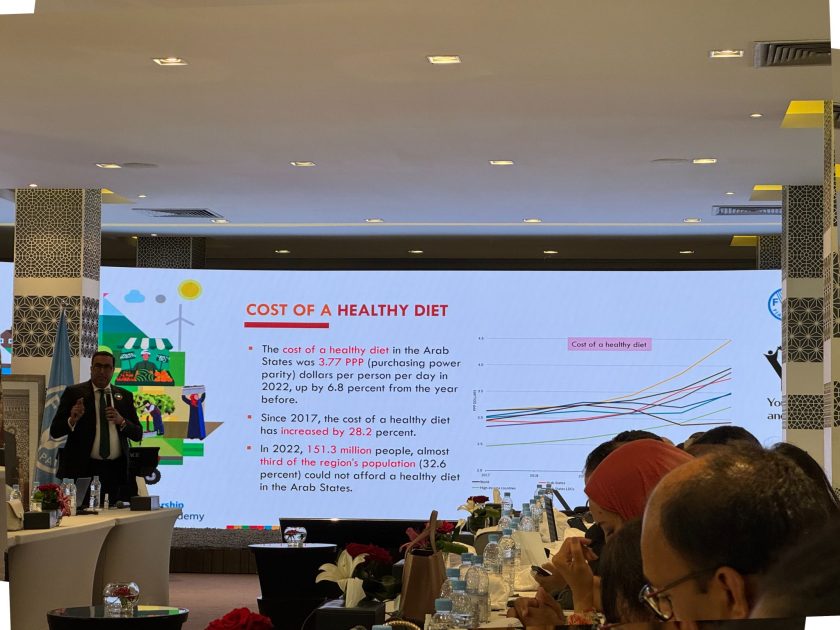Can Young Innovators Save Farming in the Middle East?
-
From
Climate Action Science Program
-
Published on
14.08.25
- Impact Area

Young people across the MENA region are leading a quiet revolution in agriculture, driving innovation, boosting climate resilience, and laying the groundwork for long-term regional stability. But for this potential to translate into real transformation, youth must be at the center of the region’s agricultural future.
This was the core message at the inaugural Youth Action Leadership for Agrifood Awareness & Systems Transformation (YALA FAST) accelerator held in July 2025 in Rabat, Morocco. The CGIAR MENA Climate Security Hub joined other partners to explore how youth-led solutions can reshape agriculture in the face of intensifying climate threats.

Youth as catalysts for agricultural transformation
Over 60% of the MENA population is under 30. Despite high unemployment rates and limited access to land and financial resources, youth are demonstrating what’s possible when given the right tools:
- In Algeria, young innovators developed a predictive pest control model for date palms, achieving 85% accuracy and reducing pesticide use by 30% (ArXiv, 2024).
- In Tunisia, youth entrepreneurs launched AgriChain, a blockchain-based financial ledger improving loan access for women-led cooperatives, significantly reducing loan approval times and improving repayment rates (Carnegie Endowment, 2025).
These examples demonstrate how empowering youth can effectively bridge technological innovation with practical, community-centered agricultural solutions.

Interconnected challenges and opportunities in MENA agriculture
Agricultural transformation in the MENA region faces severe challenges, including semi-arid conditions, chronic water scarcity, and deteriorating soil quality.
- Between 2000 and 2020, approximately 18% of North African cropland experienced yield losses due to climate stresses (UNICEF MENA Climate Report).
- Egypt’s cereal production declined by 7%, incurring annual economic losses exceeding USD 1.4 billion (FAO, 2024).
Yet, there is cause for optimism. Innovations such as Morocco’s precision drip irrigation, which reduced water use by 35% and increased yields by 22% (CGIAR SMARTlands Initiative), and Tunisia’s solar-powered desalination systems, benefiting over 15,000 smallholders (CGIAR SMARTlands Initiative), highlight significant opportunities for scale and investment.
Infrastructure and finance remain bottlenecks to scale
To fully capitalize on youth-led innovations and scale agritech solutions regionally, the region requires strategic investments:
- Enhanced digital and physical infrastructure: Expanding rural broadband access—currently under 12% coverage—to facilitate widespread adoption of data-driven agricultural practices (ITU MENA Digital Report).
- Capacity building: Implementing comprehensive agritech training programs within educational institutions to develop a skilled, youth-driven agricultural workforce.
- Financial and market accessibility: Establishing blended finance mechanisms and market linkages that specifically support young agripreneurs and smallholders, incentivizing sustainable innovation and adoption.
Financing remains a crucial barrier to agricultural transformation in MENA. Limited financial inclusion, high-risk perceptions by lenders, and inadequate policy incentives constrain investment flows into the agriculture sector. Traditional lending institutions often hesitate to fund innovative agricultural projects due to perceived risks and lack of collateral from youth and small-scale farmers. Addressing these financing challenges requires targeted interventions:
- Developing innovative financial products, such as climate-smart loans and crop insurance schemes.
- Strengthening public-private partnerships to de-risk investments and leverage resources.
- Enhancing policy frameworks to provide tax incentives and subsidies for sustainable agritech solutions.
Youth and Agricultural as a force for social cohesion and stability
Youth-driven agricultural initiatives play a significant role in strengthening social cohesion. Inclusive projects that actively engage youth and women can reduce tensions caused by competition over scarce resources. Examples like community-managed seed banks or collective water governance help build trust, ensure fair resource distribution, and lower the risks of conflict, especially in regions facing climate and economic shocks.
Priorities for a Youth-Led Agricultural Future
To unlock the full potential of youth in agricultural transformation government and development partners must:
- Amplify Youth Innovation: Establish robust innovation ecosystems, providing mentorship, incubation support, and accessible funding tailored to young agricultural entrepreneurs.
- Integrate Youth Perspectives in Policy-Making: Ensuring active youth involvement in shaping agricultural policies to reflect their innovative approaches and local knowledge.
- Invest in Youth-Centric Capacity Development: Enhancing educational and vocational training programs specifically focused on climate-smart agriculture and technological innovation.
- Strengthen Inclusive Governance: Institutionalizing participatory decision-making processes that embed youth voices, prioritize transparency, and ensure equitable resource allocation.
The path of climate resilience and peace in MENA runs through its youth. Centering their leadership will transform agriculture and enhance resilience, stimulate economic opportunities, promote social cohesion, and sustain peace throughout the MENA region.
Authors: Sara Rabie and Ibukun Taiwo, Alliance of Bioversity and CIAT
This work was carried out with support of the CGIAR Climate Action, and Food Frontiers and Security Science Programs. We would like to thank all funders whosupported this research through their contributions to the CGIAR Trust Fund(https://www.cgiar.org/funders/)
Related news
-

DTA at COP30: Why Digital Transformation Belongs at the Heart of Climate Action
Climate Action Science Program13.11.25-
Adaptation
-
Climate adaptation & mitigation
-
Mitigation
As the world gathers in Brazil for COP30, the conversations are once again focused on…
Read more -
-

COP30: Italy joins global champions to drive food systems transformation
Climate Action Science Program13.11.25-
Adaptation
-
Climate adaptation & mitigation
-
Mitigation
11 November 2025, Belém: Italy joined the Alliance of Champions for Food Systems Transformation (AC…
Read more -
-

Accelerating wheat breeding, from Toluca in Mexico to the world
CGIAR Initiative on Breeding Resources12.11.25-
Climate adaptation & mitigation
-
Nutrition, health & food security
In Mexico, a project has been completed to develop new elite parental lines of wheat…
Read more -
